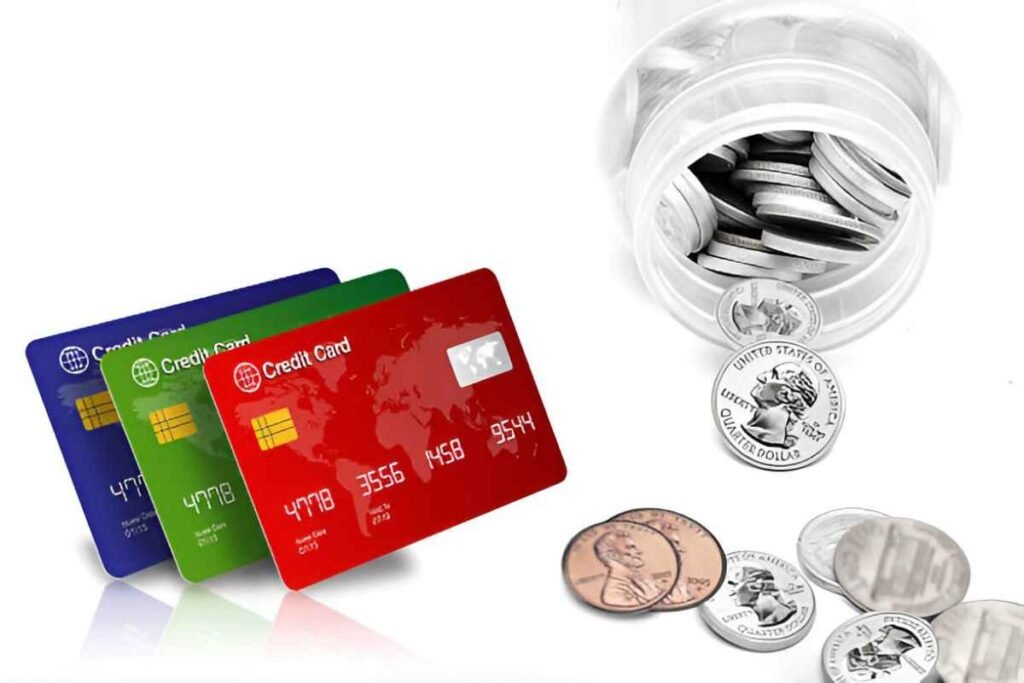In today’s world, credit cards have become an essential financial tool. The variety of options available can make it overwhelming to choose the right one for your needs. One such option is the Apple Account Credit Card, a relatively new entrant in the market that offers some unique features, particularly for Apple users. In this article, I’ll explore the Apple Account Credit Card in detail, explaining how it works, its benefits, potential drawbacks, and how it compares to other cards available in the market.
Table of Contents
What Is the Apple Account Credit Card?
The Apple Account Credit Card, also known simply as the Apple Card, is a credit card created by Apple in partnership with Goldman Sachs. It was designed to integrate seamlessly with Apple’s ecosystem, making it particularly appealing to users who are already immersed in Apple products and services. Unlike traditional credit cards, the Apple Card focuses heavily on simplicity, privacy, and the user experience. It also offers benefits directly tied to Apple purchases, including cash-back rewards on purchases made through Apple services like the App Store, iTunes, and Apple Music.
One of the standout features of the Apple Card is that it’s a digital-first credit card. Although you can request a physical card, the Apple Card is primarily used through the Apple Wallet on your iPhone. This card can be used for both online and in-person purchases, offering a wide range of uses while leveraging Apple’s technological ecosystem.
Key Features of the Apple Account Credit Card
Here’s a quick look at the standout features of the Apple Account Credit Card that make it different from others:
- No Fees: The Apple Card does not charge annual fees, late payment fees, or foreign transaction fees. The only fees you might encounter are interest charges if you don’t pay off your balance in full each month.
- Cashback Rewards: The card offers a straightforward cashback structure:
- 3% cashback on Apple purchases (including the Apple Store and Apple services)
- 2% cashback on purchases made through Apple Pay
- 1% cashback on all other purchases made with the physical or virtual card
- Privacy and Security: Apple places a strong emphasis on privacy. Unlike traditional credit cards, your transaction data is not shared with third parties. Apple Card also uses a unique number for each transaction, further enhancing security.
- Integration with Apple Ecosystem: You get real-time transaction tracking and insights directly through the Apple Wallet, which makes managing your spending simple and intuitive. Apple Card also integrates with Apple Pay, so you can make purchases using your iPhone or Apple Watch.
- No Interest or Late Fees: If you miss a payment or carry a balance, you’re not penalized with additional fees. Instead, you’ll simply accrue interest, which may make it easier for some users to manage their finances.
Apple Account Credit Card vs. Traditional Credit Cards
While the Apple Card offers a modern approach to credit, it’s important to see how it compares to more traditional credit cards. Below, I’ve broken down key differences between the Apple Card and a standard credit card:
| Feature | Apple Account Credit Card | Traditional Credit Card |
|---|---|---|
| Annual Fee | $0 | Varies, often $95+ |
| Cashback Rewards | 3% on Apple, 2% on Apple Pay, 1% on other purchases | Varies, generally 1%-5% depending on the card and category |
| Foreign Transaction Fees | $0 | Typically 1%-3% |
| Late Payment Fees | None (interest may apply) | Typically $25-$40 |
| Purchase Tracking | Integrated in Apple Wallet | Varies, often through a separate app or website |
| Customer Support | 24/7 through Apple Support | Varies by issuer |
As seen above, the Apple Card stands out in certain areas, such as fee structure and cashback rates, especially if you are a regular user of Apple services. However, traditional cards may offer higher cashback rates in specific categories, like travel or dining, depending on the card.
How Does the Apple Account Credit Card Work?
Getting started with the Apple Card is a simple process. If you already have an Apple ID, you can apply directly from your iPhone using the Wallet app. You can receive approval in minutes and begin using the card right away, either through your iPhone or Apple Watch.
Once approved, you can start making purchases with the physical Apple Card or simply use the digital card within your Apple Wallet. Transactions are immediately tracked in the Wallet app, where you can view detailed insights into your spending patterns, categorize your purchases, and see your cashback rewards accumulate.
Example of Cashback Calculation
Let’s say you made the following purchases in a month:
- $500 on Apple Store purchases (3% cashback)
- $200 on a coffee shop purchase via Apple Pay (2% cashback)
- $300 on other purchases (1% cashback)
Here’s how your cashback would look:
- Apple Store: $500 x 3% = $15
- Coffee Shop via Apple Pay: $200 x 2% = $4
- Other Purchases: $300 x 1% = $3
Total cashback: $15 + $4 + $3 = $22 for the month.
As you can see, the Apple Card offers an effective way to earn rewards on everyday purchases, particularly if you use Apple Pay for your transactions.
Privacy and Security Features of the Apple Account Credit Card
Apple has made privacy a cornerstone of the Apple Card experience. When using the Apple Card, your transactions are not shared with third parties. This stands in contrast to traditional credit cards, where your transaction data may be used for targeted advertising or shared with affiliates. Apple also uses a one-time security code for each transaction, reducing the risk of fraud. If you lose your card or think someone might have access to it, you can instantly freeze the card through the Apple Wallet app.
Moreover, Apple Card users are not required to provide personal information like your social security number or income when applying, as the card uses Apple’s proprietary credit evaluation system.
Pros and Cons of the Apple Account Credit Card
Like any financial product, the Apple Card comes with both advantages and limitations. Let’s take a deeper dive into the pros and cons.
Pros:
- No fees: There are no annual, late payment, or foreign transaction fees, which can be a significant benefit for people who tend to carry balances or travel abroad.
- Simple cashback structure: The cashback system is easy to understand and rewards you generously for using Apple services.
- Strong privacy protections: Apple’s focus on privacy ensures that your purchase data is not sold or shared.
- Seamless Apple ecosystem integration: If you’re already an Apple user, the Apple Card fits seamlessly into your digital life.
Cons:
- Limited cashback categories: While 3% back on Apple purchases is great, other credit cards may offer higher rewards in categories like dining, travel, or gas.
- Limited to Apple users: The full benefits of the card are most beneficial if you’re already in the Apple ecosystem. Android users won’t enjoy the same level of integration.
- Higher interest rates: The interest rate on the Apple Card may be higher than some other cards, so it’s important to pay off your balance in full each month to avoid costly interest charges.
Conclusion: Is the Apple Account Credit Card Worth It?
If you’re an Apple user, the Apple Account Credit Card provides an excellent opportunity to earn cashback rewards, enjoy a simple user experience, and maintain privacy in your financial transactions. For those who regularly purchase from the Apple Store, use Apple Pay, or subscribe to Apple services, the card can be a highly effective tool for managing finances and earning rewards.
However, for users who don’t primarily use Apple products, other cards may offer more rewarding benefits in categories like travel, dining, or gas. It’s important to consider your own spending habits and lifestyle before choosing the Apple Card.
In the end, the Apple Account Credit Card is a great option for those immersed in the Apple ecosystem and those looking for simplicity, privacy, and a straightforward rewards program. Just make sure you’re aware of its limitations in terms of cashback categories and interest rates, and it could be a valuable tool in your financial toolkit.





